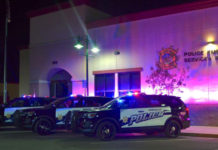The inaugural Ciclovía Gonzales, Sept. 9, 2018, is an Open Streets event for walking, rolling in a wheelchair, skating, bicycling, or using other people-powered transportation on streets free of motor vehicles. It’s sure to increase interest in biking, as do Open Streets events worldwide. That includes inspiring children and others who normally aren’t safely able or comfortable biking streets.
Open Streets are rare in Monterey County. To date, there’s only one other, Ciclovía Salinas, launched 2013 and still just an annual event.
How can Monterey County communities support biking year-round? Infrastructure improvements, such as Class 4 bike lanes with a physical barrier, are most helpful. And simple steps can be worthwhile too, such as making local ordinances — including about sidewalk riding — appropriately accommodating.
With some exceptions, biking on sidewalks is usually less safe than biking streets. For example, at driveways and intersections, drivers typically aren’t expecting a person on a bicycle coming off a sidewalk.
Nonetheless, a person who bikes may sometimes find a sidewalk their safest option. Reasons include narrow roadways or being in high-traffic areas, especially without bike lanes; low visibility conditions, such as heavy fog; nighttime riding in isolated areas, or areas without streetlights; and, of course, a child pedaling. Most people agree children up to approximately age 13 cannot really make the necessary decisions about vehicle speed and distance that allow them to bike streets safely.
California law leaves sidewalk riding to local jurisdiction. That makes sense, because infrastructure, the number of people who bike or walk, and other factors vary widely. But it makes confusion unsurprising. Some Monterey County cities allow sidewalk riding everywhere, some prohibit it entirely, and some prohibit it in specific areas.
Sidewalk riding is allowed in Salinas and Monterey, except where signs give notice of prohibition. (Sidewalk riding is prohibited, e.g., in a few areas of downtown Salinas, and on Alvarado and Calle Principal in Monterey.) In Carmel and Greenfield, sidewalk riding is prohibited in commercial/business districts. For details for those and other Monterey County cities, and unincorporated areas, see https://bit.ly/LawsSkillsSafety.
Gonzales 1972 Code § 10.52.130 states “No person shall operate a bicycle upon a sidewalk within the city,” (www.codepublishing.com/CA/Gonzales/html/Gonzales08/Gonzales0844.html#8.44.110). Gonzales officials may wish to change that complete prohibition, and if so, could include language reflecting that sidewalks aren’t designed for the speed bicycles normally travel; they’re designed for pedestrian speeds. Language could be included similar to that in Salinas and Monterey codes, e.g., “Any permitted bicycle riding on sidewalks must be done with due caution and reasonable speed. Bicyclist must yield to all pedestrian traffic and give an audible signal before overtaking and passing a pedestrian.”
If you bike, be a good ambassador for bicycling. Bike polite, be predictable and visible, and observe laws.
If you don’t bike, more people bicycling still benefits you — through reduced traffic congestion, carbon emissions, and public health costs, along with other positive impacts.
Contact your local government representatives about reviewing any bike-related local codes. Encourage updating codes as appropriate, to best serve the current transportation needs of your community.
Mari Lynch is a resident of rural unincorporated Monterey County since 1981, and founder of Bicycling Monterey, provided as a public service since 2009. Bicycling Monterey includes www.bikemonterey.org, the HER Helmet Thursdays Project, and numerous other bike advocacy projects. Bicycling Monterey is a local ally of the California Bicycle Coalition.













